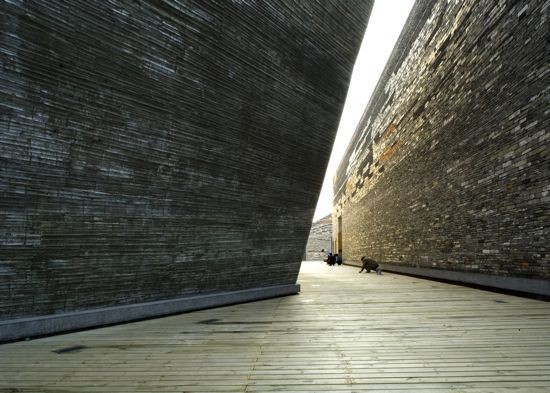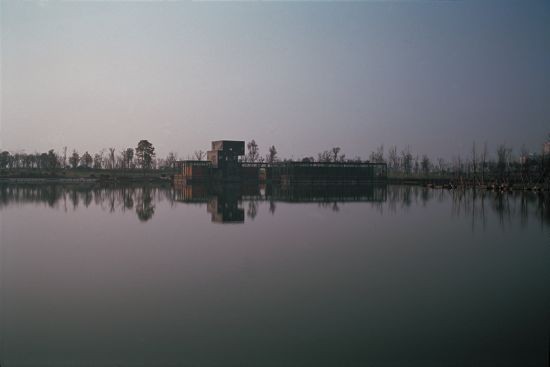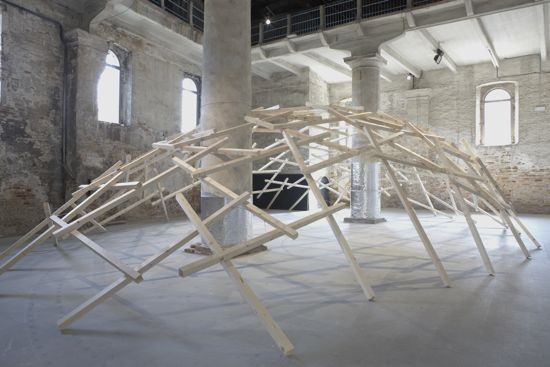 Ningbo History Museum, 2003-2008, Ningbo, China. Photo Lu Hengzhong.
Ningbo History Museum, 2003-2008, Ningbo, China. Photo Lu Hengzhong.The Hangzhou-based architect Wang Shu will be awarded the Pritzker Architecture Prize, it was announced Feb 27. Principal of the firm Amateur Architecture Studio along with his wife, Lu Wenyu, Wang is the first Chinese-trained architect to win the prize, which was also awarded to the US-trained IM Pei in 1983.
Notably for an era in which architecture has a more global reach than ever, Wang has never constructed a building outside of China. He is known for his incorporation of traditional craft techniques and salvaged materials in his designs, in implicit protest against the rapid scrap-and-build development that has characterized architecture in China in recent decades. His first architectural project, a Youth Center in Haining outside of Hangzhou, was completed in 1990. His first major project, the Wenzheng College at Suzhou University was completed in 2000, and his design for the campus library was recognized in 2004 with the Architecture Arts Award of China.

 Top: Five Scattered Houses, 2003-2006, Ningbo, China. Photo Lang Shuilong. Bottom: Installation view of Decay of a Dome (2010) at the 2010 Venice Architecture Biennale. Photo Yasuhiro Takagi for ART iT.
Top: Five Scattered Houses, 2003-2006, Ningbo, China. Photo Lang Shuilong. Bottom: Installation view of Decay of a Dome (2010) at the 2010 Venice Architecture Biennale. Photo Yasuhiro Takagi for ART iT.The citation of the Pritzker Jury, which included architects Zaha Hadid and Yung Ho Chang, singles out Wang’s designs for the Ningbo History Museum, completed in 2008, and the Xiangshan Campus of the China Academy of Art, completed in two phases from 2004 to 2007, as representative of an architectural sensibility that “opens new horizons while at the same [resonating] with place and memory,” and has a “unique ability to evoke the past, without making direct reference to history.”
As a Pritzker laureate, the 48-year-old Wang will receive a USD 100,000 grant and a bronze medallion. Recent laureates include Eduardo Souto de Moura in 2011, Kazuyo Sejima and Ryue Nishizawa of the firm SANAA in 2010, and Peter Zumthor in 2009. Wang was included in the 2010 Venice Architecture Biennale, which was directed by Kazuyo Sejima.
